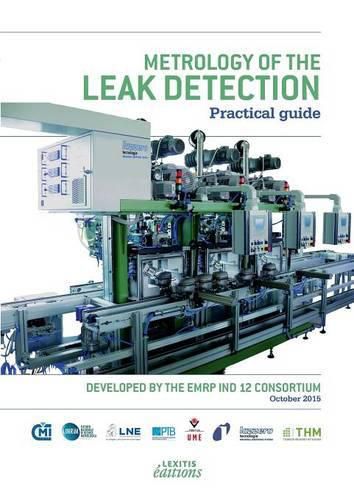Readings Newsletter
Become a Readings Member to make your shopping experience even easier.
Sign in or sign up for free!
You’re not far away from qualifying for FREE standard shipping within Australia
You’ve qualified for FREE standard shipping within Australia
The cart is loading…






Leaks have not always been a major issue in vacuum technology where they are a limiting factor to the ultimate pressure and the purity of a process gas that can be reached in a vacuum vessel, but also in any other container, be it for operational reasons (e.g. engines, air bags or pace makers), security reasons (e.g. for poisonous or radioactive materials) or environmental reasons. Limitations of refrigerant gas leakages were pointed out in regulations to meet recommendations of the Kyoto Protocol (1997). The above mentioned examples are far from being exhaustive and the leak measurement is a crucial concern in many industries. This practical guide deals with tools and theory in the field of the gas leak detection under the view of metrology, in a range from 1 x 10-10 Pa-m3-s-1 to 1 x 10 4 Pa-m3-s-1, considering leaks towards vacuum or atmosphere. It focuses on helium leak detection and refrigerant leak detection and provides the reader with useful technical information, uncertainty assessment of helium detectors in using and knowledge about refrigerant detectors evaluation according to the European standard EN 14624:2012.
$9.00 standard shipping within Australia
FREE standard shipping within Australia for orders over $100.00
Express & International shipping calculated at checkout
Leaks have not always been a major issue in vacuum technology where they are a limiting factor to the ultimate pressure and the purity of a process gas that can be reached in a vacuum vessel, but also in any other container, be it for operational reasons (e.g. engines, air bags or pace makers), security reasons (e.g. for poisonous or radioactive materials) or environmental reasons. Limitations of refrigerant gas leakages were pointed out in regulations to meet recommendations of the Kyoto Protocol (1997). The above mentioned examples are far from being exhaustive and the leak measurement is a crucial concern in many industries. This practical guide deals with tools and theory in the field of the gas leak detection under the view of metrology, in a range from 1 x 10-10 Pa-m3-s-1 to 1 x 10 4 Pa-m3-s-1, considering leaks towards vacuum or atmosphere. It focuses on helium leak detection and refrigerant leak detection and provides the reader with useful technical information, uncertainty assessment of helium detectors in using and knowledge about refrigerant detectors evaluation according to the European standard EN 14624:2012.